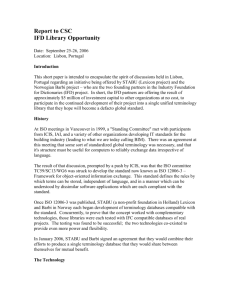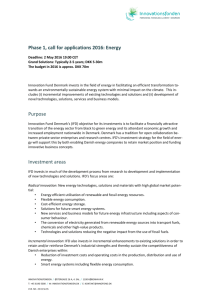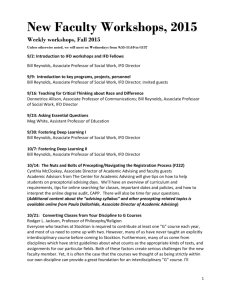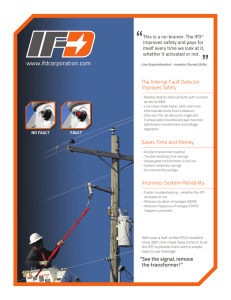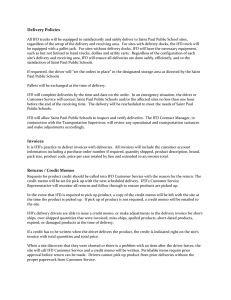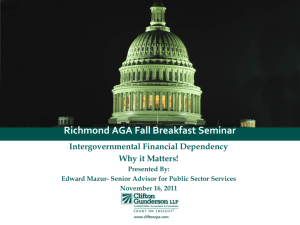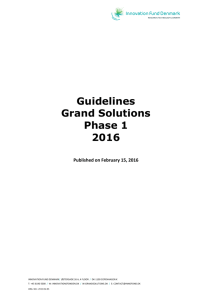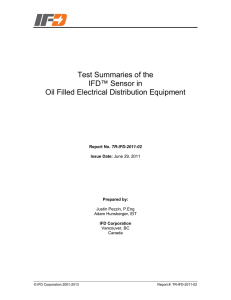IFD Clarification
advertisement
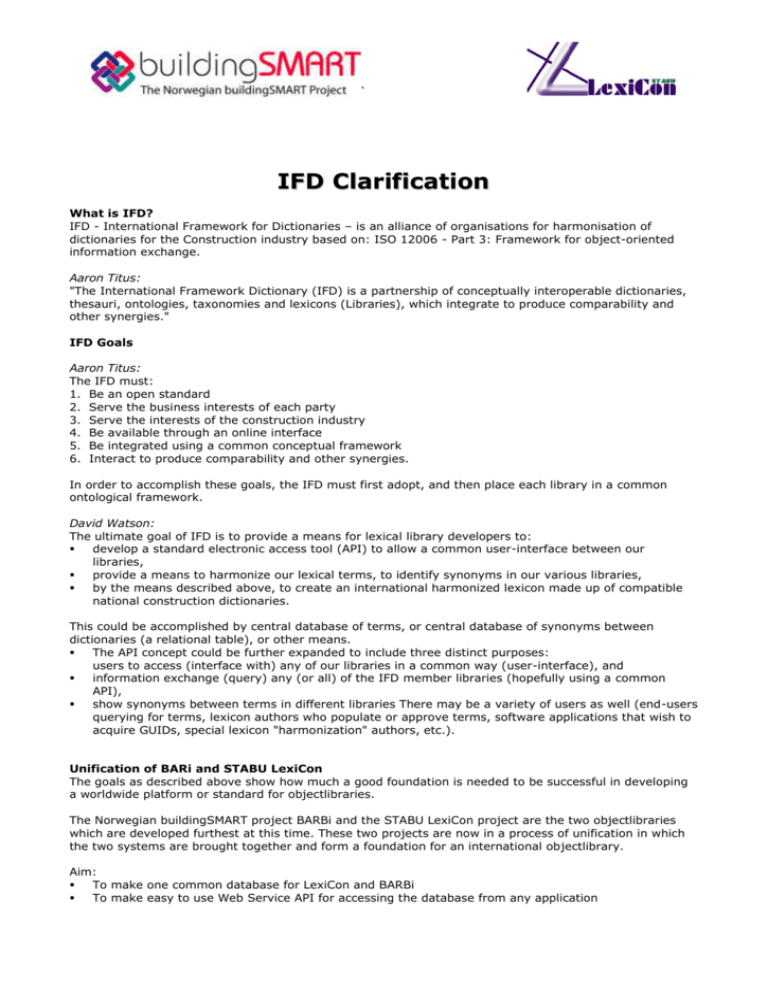
` IFD Clarification What is IFD? IFD - International Framework for Dictionaries – is an alliance of organisations for harmonisation of dictionaries for the Construction industry based on: ISO 12006 - Part 3: Framework for object-oriented information exchange. Aaron Titus: "The International Framework Dictionary (IFD) is a partnership of conceptually interoperable dictionaries, thesauri, ontologies, taxonomies and lexicons (Libraries), which integrate to produce comparability and other synergies." IFD Goals Aaron Titus: The IFD must: 1. Be an open standard 2. Serve the business interests of each party 3. Serve the interests of the construction industry 4. Be available through an online interface 5. Be integrated using a common conceptual framework 6. Interact to produce comparability and other synergies. In order to accomplish these goals, the IFD must first adopt, and then place each library in a common ontological framework. David Watson: The ultimate goal of IFD is to provide a means for lexical library developers to: develop a standard electronic access tool (API) to allow a common user-interface between our libraries, provide a means to harmonize our lexical terms, to identify synonyms in our various libraries, by the means described above, to create an international harmonized lexicon made up of compatible national construction dictionaries. This could be accomplished by central database of terms, or central database of synonyms between dictionaries (a relational table), or other means. The API concept could be further expanded to include three distinct purposes: users to access (interface with) any of our libraries in a common way (user-interface), and information exchange (query) any (or all) of the IFD member libraries (hopefully using a common API), show synonyms between terms in different libraries There may be a variety of users as well (end-users querying for terms, lexicon authors who populate or approve terms, software applications that wish to acquire GUIDs, special lexicon "harmonization" authors, etc.). Unification of BARi and STABU LexiCon The goals as described above show how much a good foundation is needed to be successful in developing a worldwide platform or standard for objectlibraries. The Norwegian buildingSMART project BARBi and the STABU LexiCon project are the two objectlibraries which are developed furthest at this time. These two projects are now in a process of unification in which the two systems are brought together and form a foundation for an international objectlibrary. Aim: To make one common database for LexiCon and BARBi To make easy to use Web Service API for accessing the database from any application ` To make an offline version of the Web Service API, including synchronization features with online database To harmonize the content in the two projects To open the door for other projects and countries with same aim Status: Specification for API and Objects completed Some of the methods in the API implemented Test use of new API from both LexiCon and BARBi completed successfully The Web Service API should be released to the general public in September 2006. Homepage for project: http://buildingsmart.byggforsk.no/index.php/Ifd:BARBi_-_LexiCon_unification Opportunities IFD The developers of the two objectlibraries are working on taking the best of both systems and put them together in one new system. This development means there will be a solid foundation for the further development of objectlibraries throughout the world. The new integrated system will be linked to the BuildingSMART program and connect to the IFC’s (Industry Foundation Classes) of the IAI (International Alliance for Interoperability). By putting down a foundation for objectlibraries the opportunity presents itself to make an international standard which will be accepted by the IAI and makes communication in the construction industry better. BARBi and STABU offer international partners to use the foundation which has been developed over the last years and help populate the new system. This way a lot of the developing work has already been done and bigger steps can be taken by our partners to give real meaning to a worldwide and locally applicable objectlibrary. During this workshop demonstrations will be given about the system and pilot-projects which have already been executed. These demonstrations will show how a global objectlibrary standard can help the construction industry in better communication. ` One object exist in multiple contexts, one central Library to connect them all … In a briefing document Properties In product catalogues Properties In classification systems Properties In building specifications Properties In a CAD system IFD Library Properties Properties In a calculation system Properties In a Facility management system Properties For demolition and reconstruction Properties ` … and still be able to communicate in the language of local markets. In a briefing document One concept carries the same unique identificatior in every language 78AF4E98C8D4406B873DBB85E1FE7DB Properties In product catalogues Properties In classification systems Properties In building specifications Properties BARBi - Norway LexiCon - Nederland EDIBATECProperties - France ??? - ChinaProperties Properties Properties In a CAD system Properties In a calculation system Properties In a Facility management system Properties For demolition and reconstruction Properties ` Connection with IFC’s: From ad-hock, fragmented information to shared standardised data Laws and regulations -Building regulations -Building specifications CAD software -Drawings, calculations -Architect, engineer,… VRML -Visualisation, 3D models Knowledge databases -Best practise knowledge -Own practice Briefing -Functional req. -Estimates -Conditions -Requirements Demolition, refurbishment -Rebuild -Demolition -Restoration IFC + IFD product model Facility management -Letting, sale, operations -Maintenance -Guaranties Construction management -Scheduling -Logistics, 4D Illustrations: Norwegian Building Research Institute, Olof Granlund, NBLN University of California, Stanford University Simulations -Comfort -Ventilation, heating -Life cycle cost -Light, sound -Insulation -Fire, usage -Environment -Life time predictions Specifications -Specification sheets -Classification standards -Estimates, accounting Procurement -Product databases -Price databases

